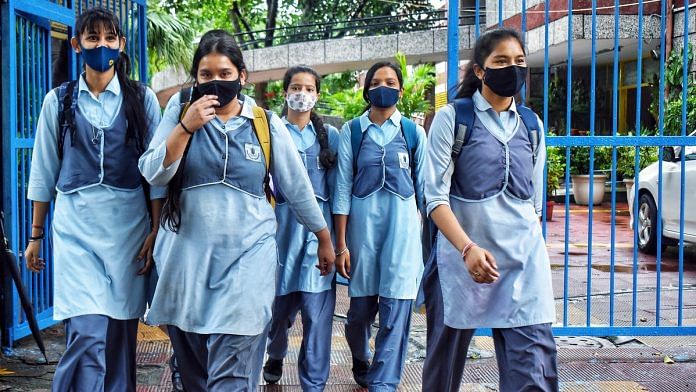New Delhi: Nearly half the countries across the world are still taking classes in the online and hybrid (both online and offline) mode while some are on an extended break due to the pandemic, a global Covid-19 education recovery tracker has revealed.
Created by the Johns Hopkins University in the US, Unicef and World Bank, the tracker captures information from 208 countries worldwide and was launched in March.
While schools have restarted in several countries over the past few months, the latest data on the tracker, till the month of September, shows that classes are yet to go fully in-person in almost half the nations.
A large number of countries are either teaching children online or through the hybrid mode, which means juggling online and in-person lessons.
For instance, in India, education is currently being imparted in the hybrid mode. At the school level, students in the senior classes have started attending school in-person in most states while junior classes continue online.
The tracker also shows that schools in some countries are on an extended break due to Covid-19.
According to a statement released by Unicef in March, the tracker was put together “to help measure the ongoing global response” to the pandemic. It is meant to help policymakers with relevant information for policy formulation around Covid-19.
Also read: Back in school after lockdowns, kids struggling to adjust, teenagers don’t want to open up
Status of schools in different countries
According to the tracker, countries that have resorted to fully in-person classes are mostly those in the upper-middle- or high-income bracket, like Canada, Russia, Greenland and China.
Most European nations like France, Germany, Italy, Spain, Poland, Sweden, Norway and the United Kingdom have returned to fully in-person classes. African countries like South Africa, Zambia and Angola are also among those where physical classes have resumed.
The US in North America, and Peru, Colombia, Argentina, Brazil and Ecuador in South America are the countries where hybrid learning is under way.
Among Asian countries, India, Pakistan and Bhutan are teaching in the hybrid mode. Schools in Australia, New Zealand, Saudi Arabia and Oman are also following this mode.
Meanwhile, schools are on an extended Covid break in Iran, Kyrgyzstan, Sudan, Tanzania, and Chad, among other countries. These breaks range from being a month-long, in Iran’s case, to being four-months-long in Kyrgyzstan.
The tracker also looks at the vaccination status of teachers across countries. It shows that all of North America, Russia, New Zealand, Australia, China, Sweden and Greenland have “good” vaccination rates among teachers.
Furthermore, India, Pakistan, Nepal, Sri Lanka and Bhutan in South Asia and Brazil, Bolivia, Ecuador and Peru in the Latin American and Caribbean region have made teachers a priority group for vaccination.
Also read: Over 2.9 crore children in India don’t have access to digital devices, govt report reveals
How Covid affected children
A Unicef press release, issued in March, had exposed the extent to which school closures had disrupted children’s education.
According to the report, schools for nearly 168 million (16.8 crore) children globally had been shut for over a year.
“Furthermore, around 214 million (21.4 crore) children globally — or 1 in 7 — have missed more than three-quarters of their in-person learning,” it noted.
It added that 22 per cent of students in South Asia, 58 per cent in Latin America and the Caribbean region, and 15 per cent in East Asia and the Pacific suffered because of the long school closure.
“School closures have devastating consequences for children’s learning and wellbeing. The most vulnerable children and those unable to access remote learning are at an increased risk of never returning to the classroom, and even being forced into child marriage or child labor,” the release said.
(Edited by Rachel John)
Also read: Don’t have PhD? You can still apply for assistant professor role this year, education minister says






